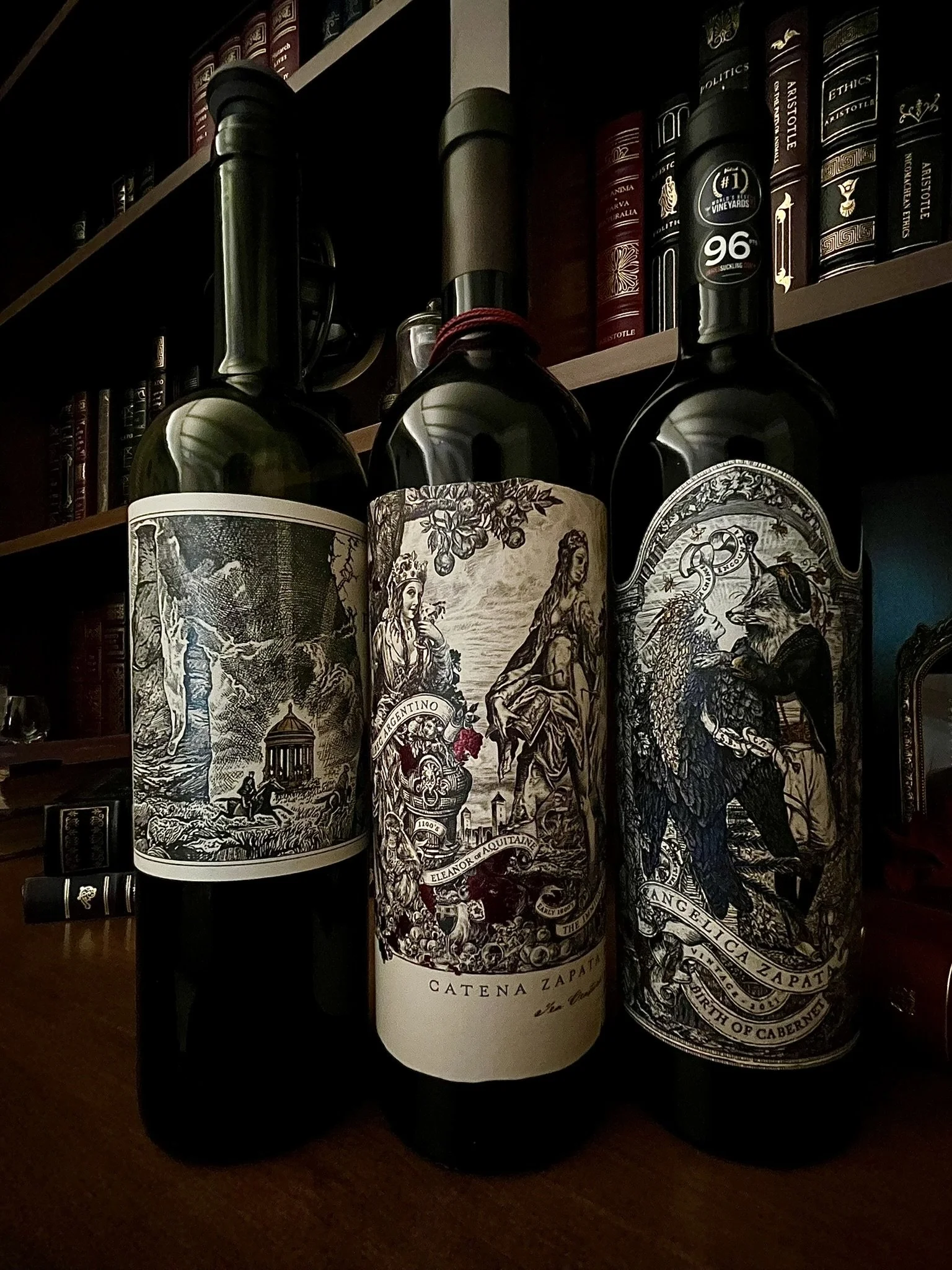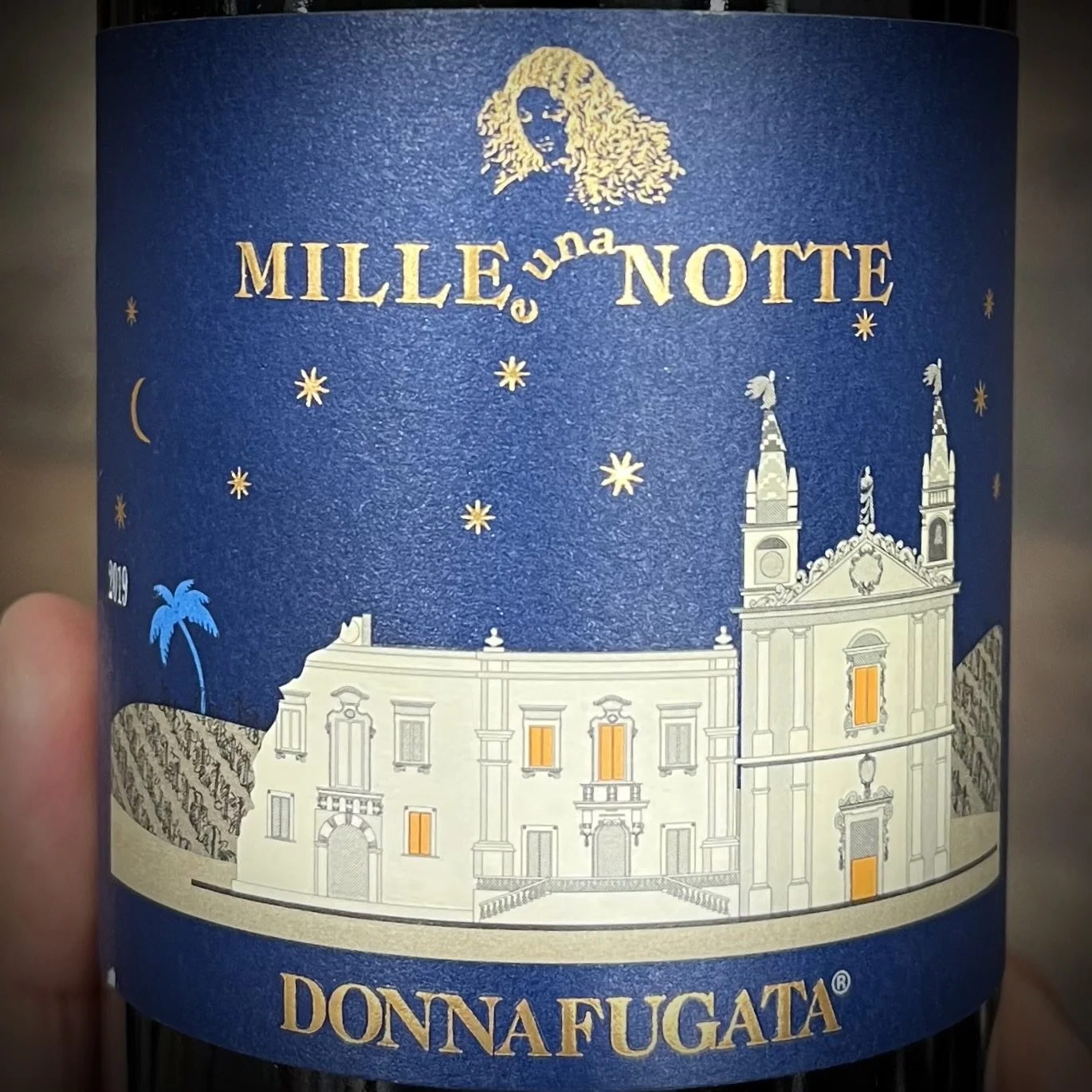7e Pensée: The Etched Prelude: the Art of a Wine Label
2020 “From the Red Soils” Pasarisa, Malbec; 2022 Catena Zapata Malbec; 2021 Angelica Zapata“Birth of Cabernet” Cabernet Sauvignon
“Ce que l’on conçoit bien s’énonce clairement.”
—Nicolas Boileau
What is a wine label but a moment caught between silence and story?
It does not pour. It does not swirl in the glass. It touches neither tongue nor throat. And yet—it is the first thing we meet: the first thing that meets us. Before the wine is tasted, it is imagined. And that imagining begins with the label.
There’s a saying that one should not judge a book by its cover—but with wine, the cover is the first whisper of the tale within. The label offers a glimpse into a whole world sealed in glass. It speaks to us not only through words or colors, but through its very artistry. Like a painting in a quiet gallery, it invites us to linger. To look again. To appreciate what lies beyond the surface.
In fact, I’ve come to walk into a wine shop not as one enters a retail store, but as one steps into an art gallery. The bottles, under the soft light, are not mere products—they are portraits. I see landscapes. I see still lifes of memory and time. I move slowly between shelves, not in pursuit of a transaction, but in mindful admiration. The labels catch the light like framed etchings, each with its own tone, its own gesture, its own tender utterance.
Some move me more than others. I’m especially drawn to labels that feel timeless—those adorned with engraving-style art, reminiscent of 18th-century illustrations. Fine lines etched like vineyard roots drawn in ink. They feel intimate, unhurried, honest. There’s something noble in a label that doesn’t shout, but speaks with quiet conviction. The engraved château façades, the delicate vines curling around a name in script—they recall an era when craftsmanship was not rushed, but revered.
2010 Château Durfort-Vivens, Grand Cru Classé en 1855, Margaux
A small rectangle—paper, sometimes textured like old vellum—carries a name. A date. Perhaps the etched silhouette of the estate, or the stoic heraldry of an ancestral crest. But it is more than a label. It is a metaphysical prologue—a threshold between the visible and the invisible, the tangible and the soul contained within.
Some are printed on textured paper that recalls old linen or parchment—meant to be touched, not merely seen. Like a memory sealed in paper. Or a love letter.
Wine, like the self, is shaped by time, by weather, by unseen labor and deep roots. It ferments not only in vats, but in memory, in ritual, in meaning. And so too does the label—it is not merely a signifier of origin, but a mirror of intention. A symbol of what the winemaker believes the wine is—or perhaps, what he or she hopes it may become.
Some labels are austere, as if to say: the contents need no introduction. Others are ornate, inviting admiration before understanding. Still others are playful, daring us to set aside assumptions and simply feel. Yet beneath them all lies a truth Montaigne might have understood: our outward presentation, however curated, is but an echo of the inner world we carry—fermenting quietly, over time.
“Je suis moi-même la matière de mon livre.” says Montaigne.
I am myself the subject of my book.
So too is the bottle its own subject—each label, a distilled philosophy.
There are moments I have stood before shelves of bottles and felt, not thirst, but kinship. As if choosing a wine were choosing a companion for the evening—one who might speak to my interiority, reflect a mood, draw out a forgotten conversation buried beneath the duties of the day. The label is the first glance across the room. The first note in a symphony not yet played.
What draws us to one label and not another? Is it the script of the font, like letters once found in a drawer? The sepia tones of a vineyard sketched from memory? Or something deeper—a vibration, a kindred spirit? As if, even before the cork is drawn, we know: this bottle speaks our language. That its soil shares something of our longing.
A great label, like a great line of poetry, does not explain—it evokes.
And when the bottle is empty, what then? Do we discard the label like a used envelope—or keep it, as one keeps a letter from a dear friend? Proof that something once passed between us and the world. Some I have framed. Others rest quietly in boxes. But a few—those that expressed something deeply personal—I have pressed into notebooks. A quiet archive of evenings worth remembering. The glue may fade. The paper may yellow. But the memory remains vivid: where I was, what I felt, who I was becoming.
They are more than souvenirs. They are touchstones. Reminders not just of flavor, but of presence—of having once lived deeply in a moment, glass in hand, stars overhead.
In this way, wine labels are mementos of existence. Small testaments to time, place, and care. The outermost skin of something intimate—like the binding of a personal journal, or the cover and bookplate of a beloved book. And though they do not contain the wine, they carry the invitation to pause. To consider. To behold.
And what is a life, if not a series of such invitations?
“Chaque étiquette est une confidence.”
Each label, a confidence shared. A whisper across time.
So the next time you step into a wine shop, resist the impulse to rush. Let it be a gallery. A hushed sanctuary of choice. Wander as you would through a museum. Let your eye be caught. Let your spirit be stirred.
Even before the first sip, we sense what has been clearly, lovingly expressed. As Boileau wrote, what is well conceived is clearly expressed—and sometimes, the expression begins not in taste, but in sight.
And when a label speaks—truly speaks—listen.
You may find that the most beautiful conversations begin not with words, but with art.
And that the wine, when it finally finds your glass, was always destined to find you.
Santé
2020 Donnafugata Mille E Una Notte, Nero D’Avola
2018 St. Giorgio Chianti Classico Riserva
2023 La Belle Angele, Chenin Blanc
2022 Orin Swift Cellars, Cabernet Sauvignon, Palermo





